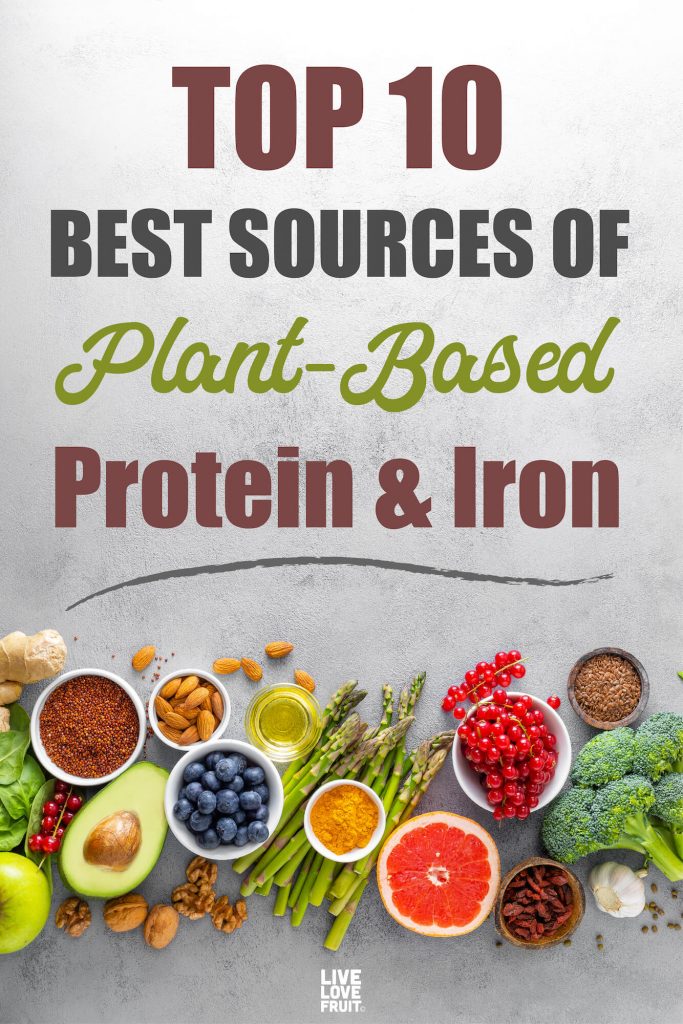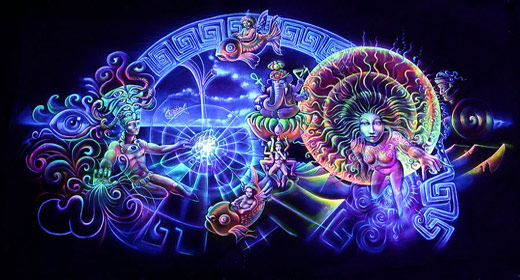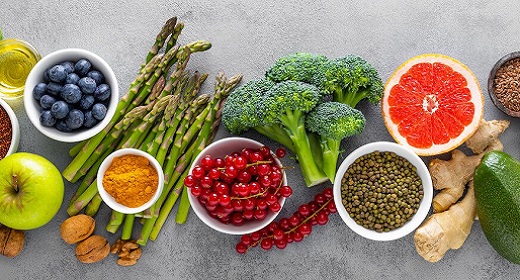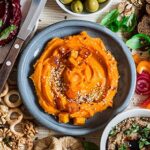by Carly Fraser: Eating meat-free doesn’t mean you’ll be skimping on protein and iron…
In fact, there are many non-meat protein and iron sources, some that kick meat and other animal-products right out of the water!
Aside from being better for the environment, cheap, and lower in calories, these plant-based foods will help improve your health for the better.
In October of 2015, the World Health Organization released a study that found consumption of red and processed meat products significantly increases one’s risk of cancer.
Animal products are also known to increase your risk of heart disease, type 2 diabetes, and even death.
Are Plant-Based Proteins Complete?
A question I get asked often is whether plant-based proteins are complete.
Well, studies have actually looked at this, and what they found has been quite interesting.
But first, what is a “complete” protein?
When we talk about a complete protein, we are referring to the number and type of amino acids (building blocks of protein).
There are 20 different amino acids, with 9 of them being those that the body cannot produce on its own. These other 9 are called essential amino acids – ones we need to eat since we can’t make them ourselves).
A protein is considered “complete” if it contains all 9 of these essential amino acids in equal amounts.
A 2019 study published in Nutrition Reviews states (4):
“There are common misconceptions about whether all plant foods contain all 20 amino acids. It is widely believed among both health professionals and the general population that certain plant foods are entirely devoid of specific amino acids and, thus, that protein adequacy cannot be supported by plant foods alone. In fact, all plant foods contain all 20 dietary amino acids. Figure 1 (and Table S1 in the Supporting Information online) provides data on the proportions and amounts of each of the 20 amino acids found in a variety of animal and plant foods.”
I’ve included Figure 1 below to show you that all plant foods, do in fact, contain all 20 amino acids.
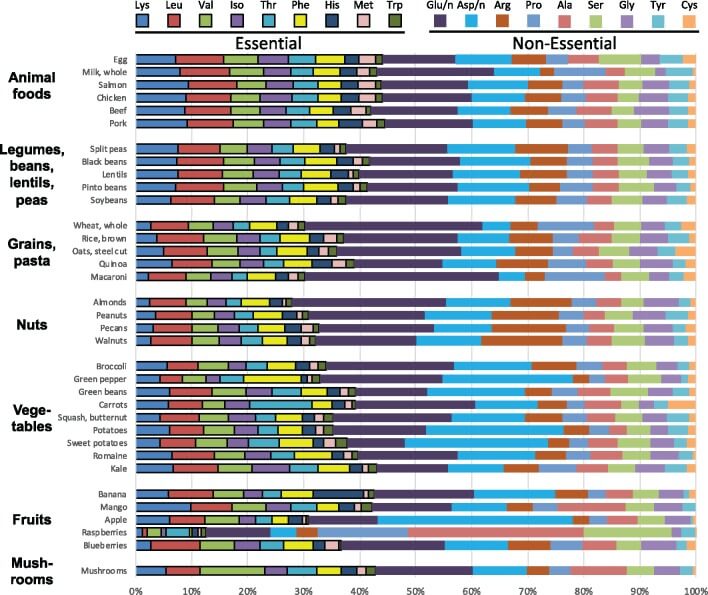
The authors then go on to say:
“If it were difficult for individuals to meet their protein needs on a given day (eg, limited access to food), it could be easier to come closest to achieving protein adequacy by choosing animal foods over plant foods because of the better match-up of amino acid distributions. However, for those with access to a reasonably varied and diverse diet (eg, “…an eating pattern that is varied, nutritious and adequate in energy and other nutrients—not made up of, say, just cookies, crackers, potato chips and juice”), it would be rare for them to not meet their daily protein requirement from any of a diverse range of diets.”
So as long as you’re not eating highly processed foods every day, and don’t live in a food desert, getting enough “complete” protein from plant-based sources is quite simple.
Can You Get Enough Iron From Plants?
For the case of iron, you have nothing to worry about.
Iron is widely available in all plant foods. You just need to make sure you’re eating enough of the right foods.
Let me tell you a quick story of how my anemia “mysteriously” disappeared after quitting my addiction to dairy.
When I was a vegetarian, I ate so much cheese. I would have 1/2 cup of cottage cheese for breakfast (alongside some other foods), some kind of meal (with cheese) for lunch, and then maybe some other kind of cheese (like feta in a salad) for dinner.
I also drank a lot of milk.
Not only did I deal with bloating and mucus, but my iron levels were so low that I was chronically anemic.
One day I decided to stop eating dairy to see if it would help my bloating. It did stop my bloating, but it also returned my blood iron levels back to a normal state.
I was quite interested in how giving up dairy made my iron levels come back to normal again, so I started researching how dairy might impede the ability of iron to absorb properly.
Turns out, it does.
Studies have found that dairy has adverse effects on iron stores . Clusters of phosphoserine residues in cow milk caseins bind iron with high affinity, meaning that if you consume dairy, you’re probably not going to be absorbing much iron.
So, with that being said, yes, you can get enough iron from plant foods if you’re not also simultaneously consuming foods that impede the absorbability of iron!
Best Sources of Plant-Based Protein and Iron
Getting enough protein and iron from plant foods is easy, as long as you eat a wide variety of foods.
With that being said, some plant-based foods are particularly high in protein and iron.
If you choose to include these foods in your diet, be sure to pair them with vitamin C-containing foods as well! Vitamin C will help your body absorb the iron found in plant foods much better.
For example, combining chia seeds in a glass of freshly squeezed orange juice will ensure you absorb all of the iron from the chia seeds!
Or, you could make a smoothie with spinach, oranges, mixed berries, and some pitted Medjool dates.
So, without further adieu, here are some of the best sources of plant-based protein and iron.
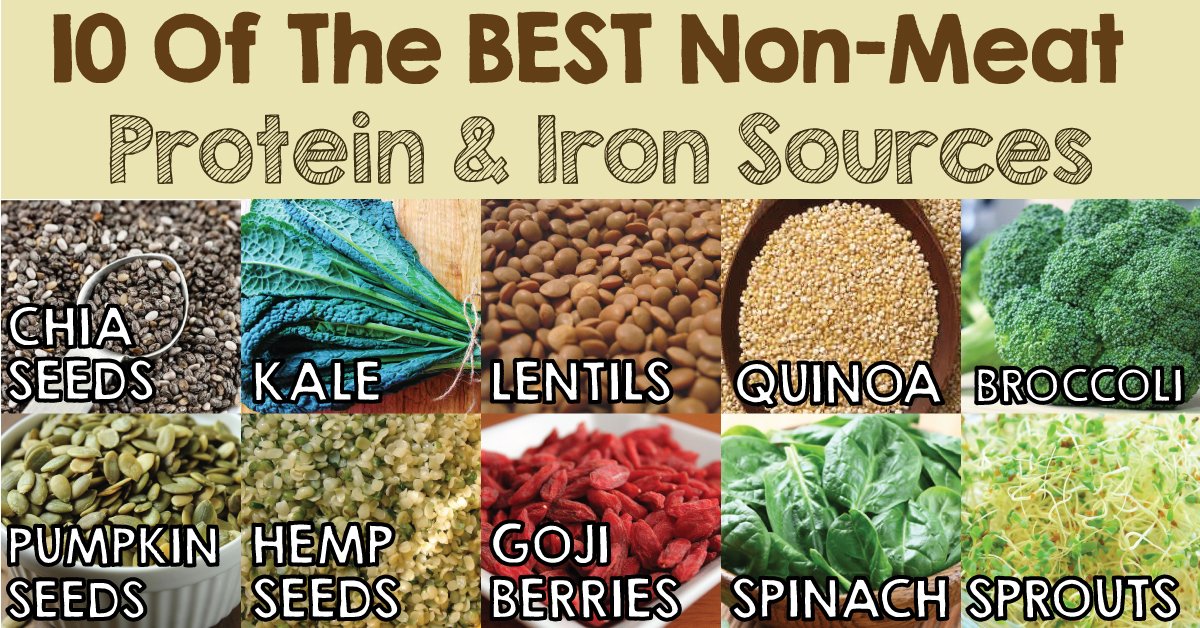
1. Chia Seeds (1/4 cup = 12 grams protein; 3.5mg iron)
One of the most nutritious foods on the planet, chia seeds, have been sweeping the health food movement ever since they became popular a few years back. You can stick them in salads, make puddings, put them in smoothies, or use them in replacement for eggs!
2. Kale (1 cup = 3 grams; 1mg iron)
Of course kale is on this list! With one cup providing nearly 3 grams of protein, it is clear that you can pack in a huge protein punch when you use this lettuce to create a large salad for dinner. It is full of vitamins A, C, and K, as well as folate, a B vitamin crucial for brain development.
3. Lentils (1 cup = 50 grams; 6.6mg iron)
Lentils are great, either cooked or sprouted. As with most beans, lentils are a hefty source of plant-based protein. I don’t consume cooked lentils myself, but I have them sprouted every now and then. Lentils are great for lowering cholesterol, improving heart health and digestion, stabilizing blood sugar and increasing energy.
4. Quinoa (1/4 cup dry = 6 grams; 2mg iron)
If you haven’t tried quinoa yet, now’s the time! This gluten-free pseudo-grain is an excellent source of plant-based protein and iron and is high in magnesium (a mineral not many of us get) and phosphorous. You can cook quinoa, or sprout it! It mixes well with parsley, tomato, and avocado, and then using this mixture to scoop onto lettuce boats. I also used to enjoy cooking quinoa and then mixing it with cooked butternut squash and lightly sautéed cremini mushrooms with coconut oil and onion.
5. Broccoli (1 cup = 3 grams; 1mg iron)
Your parents were right when they told you to eat your broccoli! This cruciferous vegetable is packed with protein, iron and hefty cancer-fighting compounds called sulforaphanes. It strengthens bones due to its high calcium content and is full of a vast array of crucial phytonutrients. I love eating raw broccoli with this low fat, raw vegan cheese sauce that my friend Ashley from Naturally Ashley so cleverly constructed!
6. Pumpkin Seeds (2 tbsp. = 10 grams; 1mg iron)
Pumpkin seeds are an excellent snack to add to your diet. They are high in zinc, a mineral that most people are deficient, and which contributes to the health of our immune system. I love putting pumpkin seeds in my salads! Make sure you soak your pumpkin seeds (as with all nuts and seeds) to make them easier on digestion.
7. Hemp Seeds (1/4 cup = 10 grams; 4mg iron)
These amazing little seeds are one of the most nutritionally complete food sources in the world! They contain all of the essential amino acids and essential fatty acids needed to maintain an optimal state of good health. Hemp seeds are a wonderful addition to smoothies and salads as well as baking (although that would destroy a lot of the amino acids, and enzymes if you are using raw hemp seeds). Visit this website for more incredible hemp seed facts!
8. Goji Berries (1 cup = 10 grams; 18mg iron)
These powerful little berries have all 18 amino acids, as well as a hefty amount of vitamin A, E, B1, B2 and B6. Add them to smoothies or salads – their flavour goes a long way!
9. Spinach (1 cup = 5 grams; 1mg iron)
This tasty leafy green vegetable is a great source of iron and protein. It’s no wonder Popeye ate spinach to boost his strength! Spinach is an excellent source of vitamin K, C, A, and B6 as well as calcium, copper and manganese. I love adding it to my smoothies and mixing it in with a big salad of different lettuce types.
10. Sprouts (1 cup = 5 grams; 5mg iron)
Sprouts are an incredible superfood, especially if you are vegan. You can make sprouts out of any nut, seed, legume or bean. For example, you can make adzuki bean sprouts, buckwheat sprouts, clover sprouts, fenugreek sprouts, lentil sprouts, sunflower seed sprouts – the list goes on. These are amazing mixed into salads or blended into smoothies.
